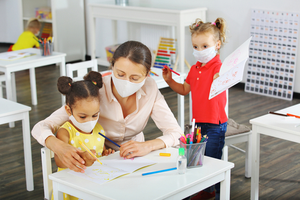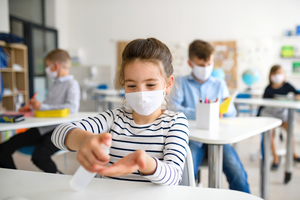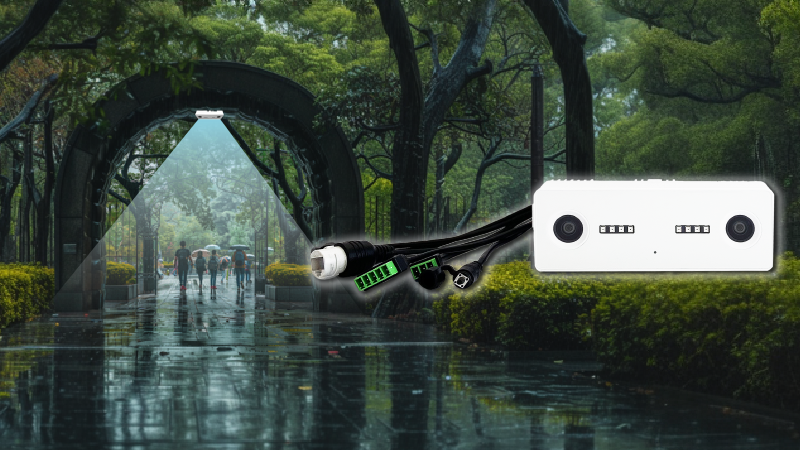 The Covid-19 outbreak has been declared a public health emergency as the virus spread to most countries and territories around the world. While COVID-19 continues to spread, communities must take action to prevent any further spread, reduce the impact of the outbreak, and support safety measures.
The Covid-19 outbreak has been declared a public health emergency as the virus spread to most countries and territories around the world. While COVID-19 continues to spread, communities must take action to prevent any further spread, reduce the impact of the outbreak, and support safety measures.
The protection of children and educational facilities, in particular, is of utmost importance. Taking safety precautions is necessary to prevent the further and potential spread of COVID-19 in a school setting. Measures taken by schools can reduce or prevent the entry and spread of COVID-19 among students, teachers, and administrative staff who may have been exposed to the virus.
Many countries across the globe are slowly seeing an increasing number of children returning to classrooms. Due to worldwide school closures, more than 1 billion students are still out of school. However, 105 out of 134 countries that have closed schools have decided on a date for reopening. As of late August 2020, 59 of those 105 countries have already reopened schools or plan to open them soon.
Due to the difficulty of the situation and variation in severity across the world, countries are at different stages of deciding on how and when they are reopening schools. When determining whether or not to reopen schools, every child’s best interest should be at the center of these decisions.
It’s crucial for schools to plan ahead and look at what additional measures they can put in place to help ensure the safety of students, teachers, and other staff when they return so that parents are confident in sending their children back to school.
However, going back to school will likely look different from what we were used to before. It’s possible for schools to reopen for  some time and then temporarily close again, depending on the individual situation and potential cases. Because of this evolving situation, authorities will need to be flexible and ready to adapt to help keep every child safe.
some time and then temporarily close again, depending on the individual situation and potential cases. Because of this evolving situation, authorities will need to be flexible and ready to adapt to help keep every child safe.
Following basic principles can help keep students, teachers, and staff safe at school and help stop the virus’s potential spread. Recommendations for healthy schools are:
- Any students, teachers, or other staff feeling sick should not come to school.
- Schools should enforce frequent hand washing.
- Hand sanitizer stations should be distributed throughout the school on every surface.
- Daily disinfection and cleaning of school surfaces should be carried out.
- Schools should provide sanitation and waste management facilities to follow environmental cleaning and decontamination procedures.
- Schools should promote social distancing.
- Large groups or gatherings of students should be limited.
- Moving classes to temporary spaces or outdoors.
- Holding school times in shifts.
- Reducing class sizes.
Hygiene facilities will be an integral part of schools reopening safely. Administrators should look at opportunities to improve hygiene measures, including handwashing, social distancing measures, sanitization procedures for different school facilities, and safe food preparation practices.
Related: Real-Time Occupancy Counting Solutions
The coronavirus pandemic has started a wave of surveillance technology to help schools prevent and contain possible infections. Schools have an opportunity to utilize technological solutions to further ensure their students’ and staff’s safety beyond basic measures. Thermal imaging cameras can be used to measure students’ temperatures, and security cameras can detect when students have removed their masks or are standing too close to each other.
V-Count’s people tracking and occupancy solutions are also being widely used to monitor the numbers of people present at a location at a single time. The VCARE real-time occupancy solution is ideal for providing schools with actionable data to ensure student’s and staff’s safety. Through digital screens that display safety recommendations based on predefined capacity thresholds, teachers and students can stay informed about the number of people at different school zones. This adds the benefit of having more control over facility management by providing periodic and frequent sanitization for the least-crowded areas.






